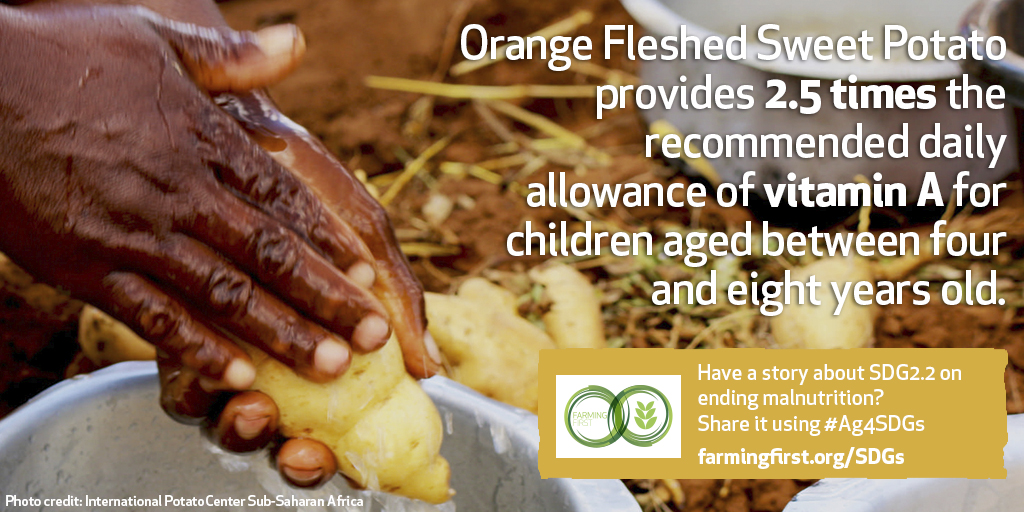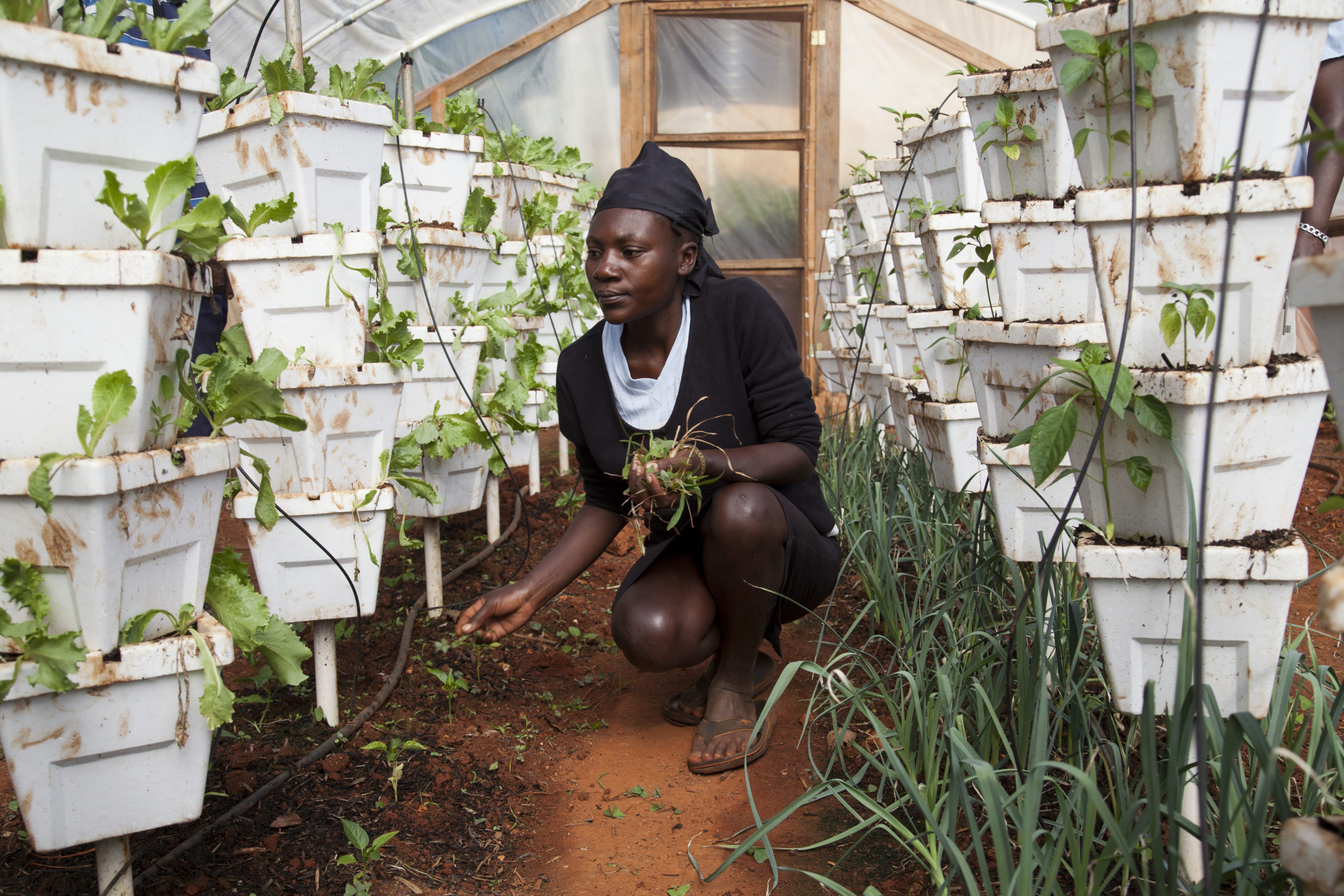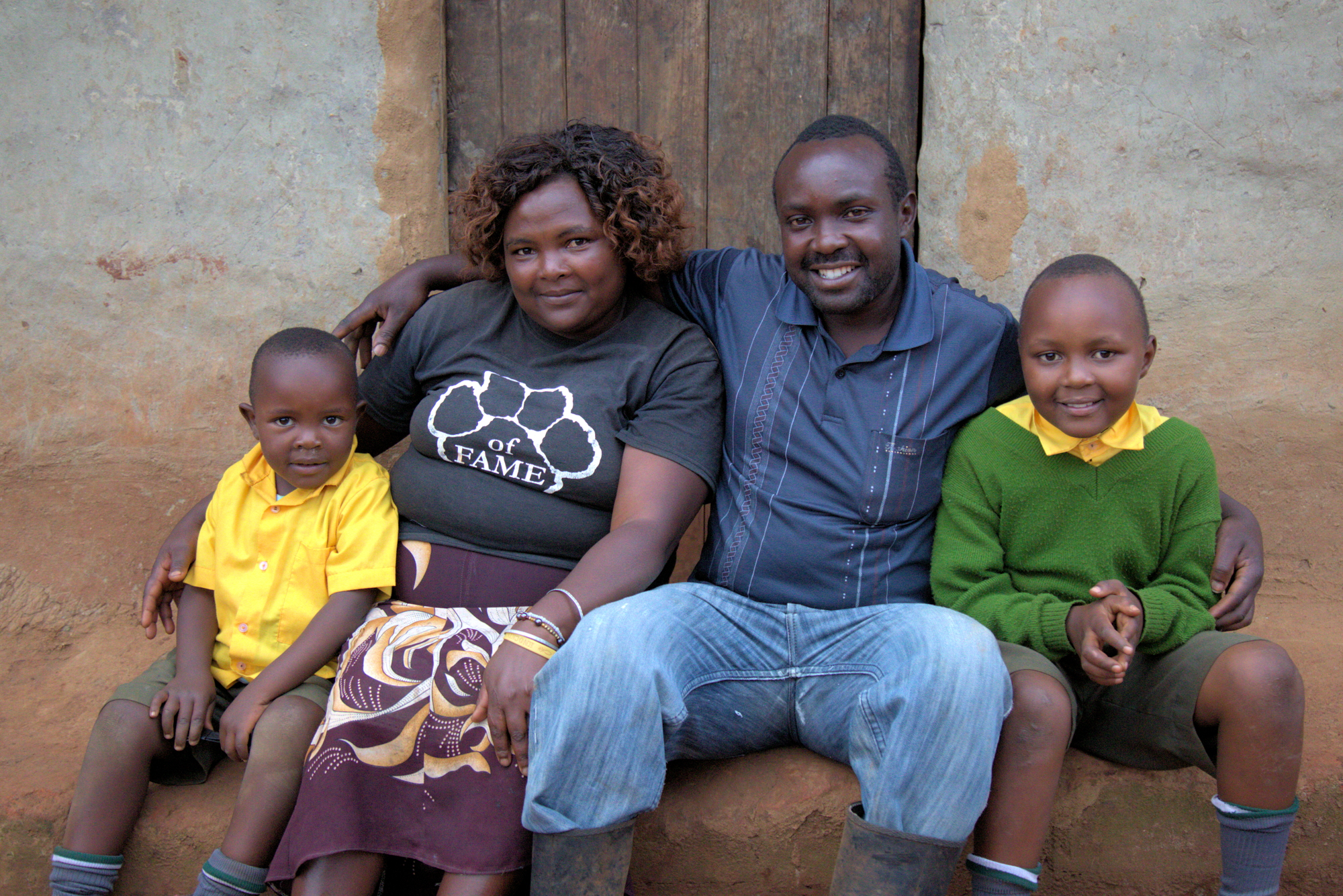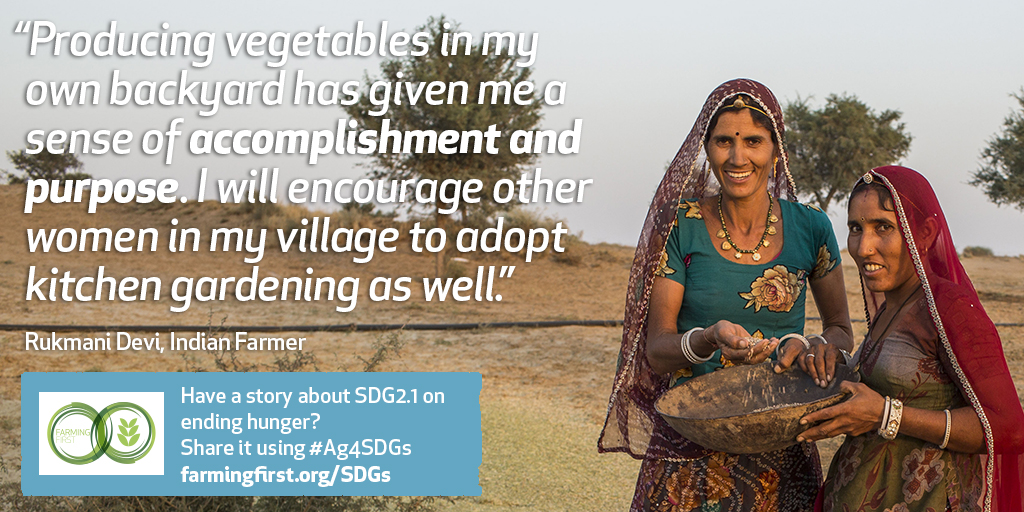For the past five weeks, Farming First and its supporters have been sharing stories on how agriculture is helping us achieve the Sustainable Development Goals in our #SDG2countdown campaign. We explored each target of SDG2 in detail, sharing quizzes, videos, infographics and stories of success. As well as being central to achieving hunger, these stories revealed that agriculture has a key part to play in meeting many other goals, such as gender equality, combatting climate change and water management. Read some top picks from the stories submitted below in this latest “Supporter Spotlight” blog. For more stories, search #Ag4SDGs on Twitter.
SDG2.5 – Protecting Genetic Diversity
1. HarvestPlus: It’s in the Genes
HarvestPlus has championed the development of iron-rich and other biofortified crops, which have been shown to improve nutrition and public health by reducing micronutrient deficiencies. Such deficiencies affect two billion people, causing long-term physical and cognitive impairment, and even death. This agricultural intervention will not only combat hunger, but contribute to goals on improved health and wellbeing for all. In order to breed new varieties of staple crops with nutrient-rich traits, it is necessary to protect the genes that have these traits to begin with. Read more >>

2. CropLife International: Breeding Better Crops to Save on Carbon
Improved breeds of crops that make the most of diverse genetic traits have helped increase yields by 22 per cent in the last 20 years. This has also meant an estimated 132 million hectares of land have been saved from cultivation, thus drastically lowering agriculture’s carbon footprint, and contributing to goals on combatting climate change. Read more >>
SDG2.4 – Building Resilience
3. QuickFarm: An Information Exchange for Getting Climate-Smart
QuickFarm has developed the Agroecological Intensification Exchange, a free, online resource for farmers to access advice on sustainable farming practices. Meanwhile, it is also promoting climate-smart practices through a Farmers Field School in Nigeria. Given that farmers are at the forefront of climate issues, having yields affected by extreme weather, agriculture interventions such as farmer field schools can not only help them adapt to new weather patterns, but also ensure they lower their own carbon footprint, thus contributing to goals on combatting climate change. Read more >>
4. Chemonics: Greenhouses Offer Haitian Farmers Year-Round Bounty
Haiti has suffered several dramatic weather events in recent years, from deadly droughts to hurricanes. Climate-smart agriculture techniques are being implemented to lessen the negative impacts of climate-related shocks. The USAID-funded Haiti Chanje Lavi Plantè (CLP) program, implemented by Chemonics, strives to protect hillsides from erosion through terracing and by setting up greenhouses to allow farmers to produce crops all year round. Read more >>

Chemonics: A greenhouse growing lettuce and peppers.
5. DigitalGlobe: An Eye on Productivity in Mali
By using DigitalGlobe’s satellite imagery to track the health of agriculture systems in Mali, ICRISAT were able to evidence adoption of good agricultural practices. Analyzing crop health at the plot level provided an important insight as to whether or not those farmers were applying the recommended amounts of fertilizer. With this imagery, farmers that are adopting practices such as optimal fertilizer use are now able to prove they follow best practice, thus making them more credit worthy. Read more >>
SDG2.3 – Doubling Smallholder Productivity & Incomes
6. Shaping Up Shambas Boosts Profits in Kenya
Shamba Shape Up: Shamba Shape Up is East Africa’s favourite farming television show, watched by 5 million viewers, aiming to not only entertain, but to educate and improve the livelihoods of farmers across the region. The TV show effectively gives farmers a source of sound agricultural information. In 2014, Reading University, estimated that the total net increase in the value of milk produced in Kenya, as a direct result of Shamba Shape Up, was US$24 million.
7. Feeding the Soil to Feed Farmer Incomes
IPNI: Indian farmers have been looking for less water-intensive crops to farms than rice, but balanced nutrient supply and improving soil health has proved to be a big challenge for those attempting to grow maize and other grains. In West Bengal, IPNI discovered that while nitrogen is the most limiting nutrient, addition of potassium, phosphorus, sulphur and zinc were found to add US$80 – $290/ha to the income of farmers growing maize. Similar responses were also recorded in the rice in these on-farm trials. By boosting productivity and incomes, goals to reduce poverty are also tackled. Read more >>
8. Farm Africa: Bumper Harvest for New Crop of Farmers
A private-public collaboration between supermarket chain Aldi and Farm Africa has established 21 demonstration plots, where young farmers have learnt practical skills for growing mangetouts, French beans, cabbages, kale and chilli peppers. Almost 400 young farmers, from Kitale in western Kenya, are now benefiting from the fundamental agricultural skills and practices learnt including: crop rotation, irrigation, planting, harvesting and pest management. The first harvests this year have seen bumper yields, with 96,500kg of cabbages and 37,200kg of French beans grown by the first group of 118 farmers to have completed a growing cycle so far. The first vegetables to have been sold achieved impressive profit margins of 62 per cent for cabbages and 50 per cent for French beans. Read more >>

Farm Africa: Joseph with his family
SDG2.2 – Ending Malnutrition
9. IFDC: Getting Nutrition “Just Right” in Ethiopia
IFDC’s Toward Sustainable Clusters in Agribusiness and Entrepreneurship (2SCALE) project partnered with Ethiopian food processing company GUTS Agro to create a marketing strategy for Super Mom, a high-protein corn-soy food product for young children and pregnant and nursing mothers. To make this product affordable for low-income consumers, 2SCALE assisted in developing the “Likie” distribution model. The Likie model (which means “just the right size” in Amharic) engages women in micro-franchisees to deliver the product door-to-door on branded tricycles and provide education on nutrition and other topics. After an investment as low as $5, these women typically net $47 within the first few months, and some have reported sales as high as $500 per month, contributing to goals on nutrition and employment.
10. Technoserve: Growing Gardens for Gender Goals
Encouraging women in Rajasthan, India, to start kitchen gardens has improved their families’ nutrition by adding fresh produce that was previously out of reach because of a lack of refrigeration. It has also help redefine women’s role in their households, thereby not only contributing to goals on nutrition, but gender equality too. Read more >>

11. One Acre Fund: Helping Achieve Double Win of Beating Drought and Malnutrition
One Acre Fund is working with farmers to enable them to feed their families, despite the onslaught of climate change. OAF trainings stress the importance of crop diversity and soil health. They advise farmers to rotate crops, compost, and use intercropping planting techniques that benefit soils. If farmers plant many different types of crops, they’re better protected in extreme weather if one crop fails, meaning they and their families won’t face a hunger season. Read more >>
SDG2.1 – Ending Hunger
12. Fintrac / CropLife International: Sweet Success for Strawberry Farmers
The USAID/ACCESO project in Honduras has helped farmers learn sustainable agricultural practices, give them access to inputs, such as seeds and crop protection, and link them to secure markets. Between 2011 and 2015 more than 6,000 smallholder farmers were lifted out of poverty and the prevalence of underweight children under two-years-old decreased by 50 percent as their diet improved. Read more >>
13. Self Help Africa: Two Village Project Transforms Lives
In Zambia, SHA’s three year project based in two remote villages in the Northern Province, saw a rise in access to sufficient food – from 57% at the start of the project, to 67% currently. Furthermore, 28% of children in the area are now receiving at least the minimum food diversity in their diets, compared to 17% before. The key foundations of the project were access to saving and credit groups, access to training as well as equal support for women. Read more >>
14. CNFA: One Stop Shops for Ending Hunger
In Ethiopia, six privately-owned input supply stores created under the USAID-funded Commercial Farm Service Center Program and supported by CNFA have now served more than 24,800 farmer customers, generated $1.3 million in private sector investment, and sold more than $2.7 million worth of seeds, feed, fertilizer, farm implements, veterinary medicines, and plant protection products. These “one stop shops” are equipping farmers with all they need to boost their productivity and incomes, and thereby helping to lift communities out of poverty. Read more >>
Featured image: One Acre Fund



